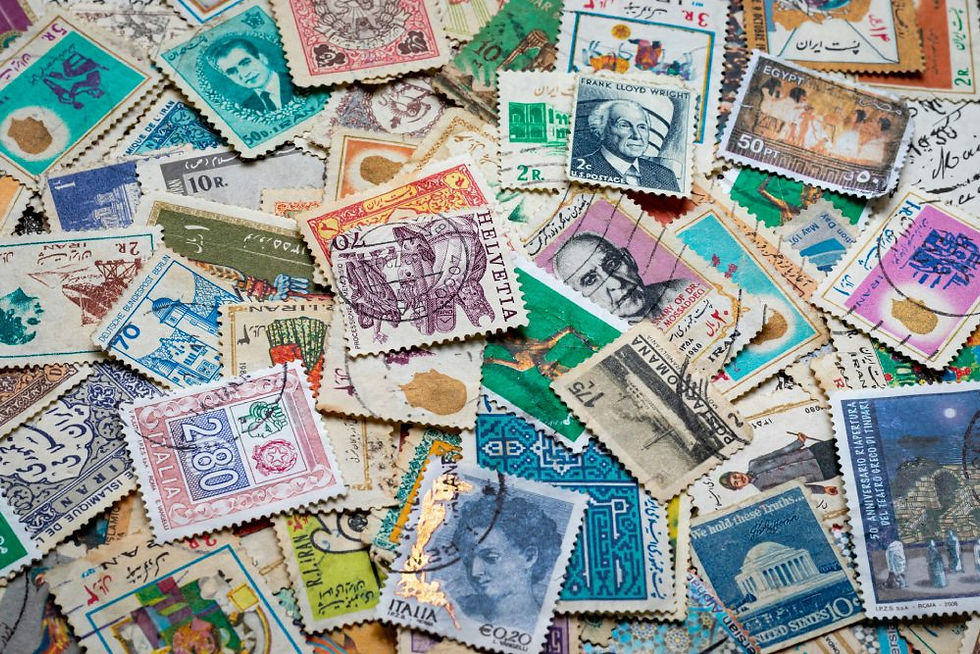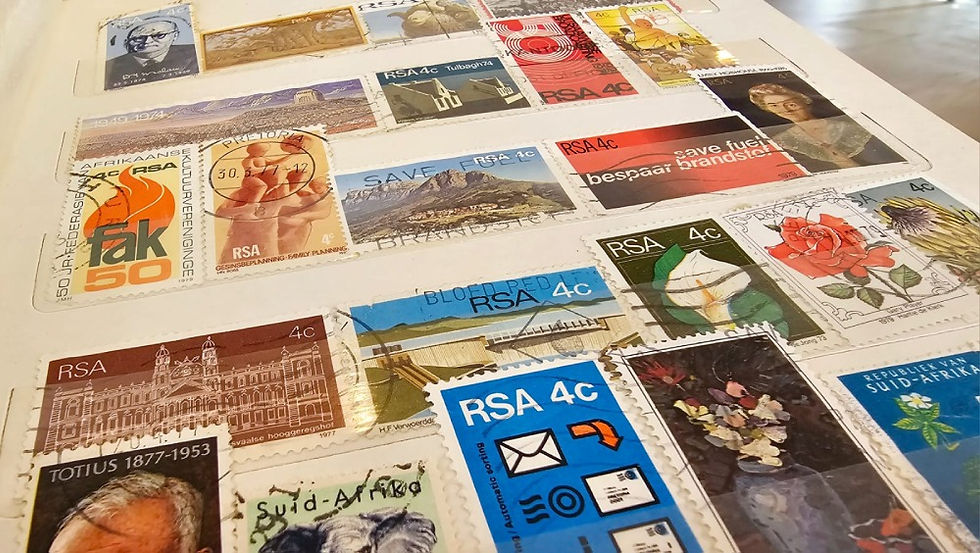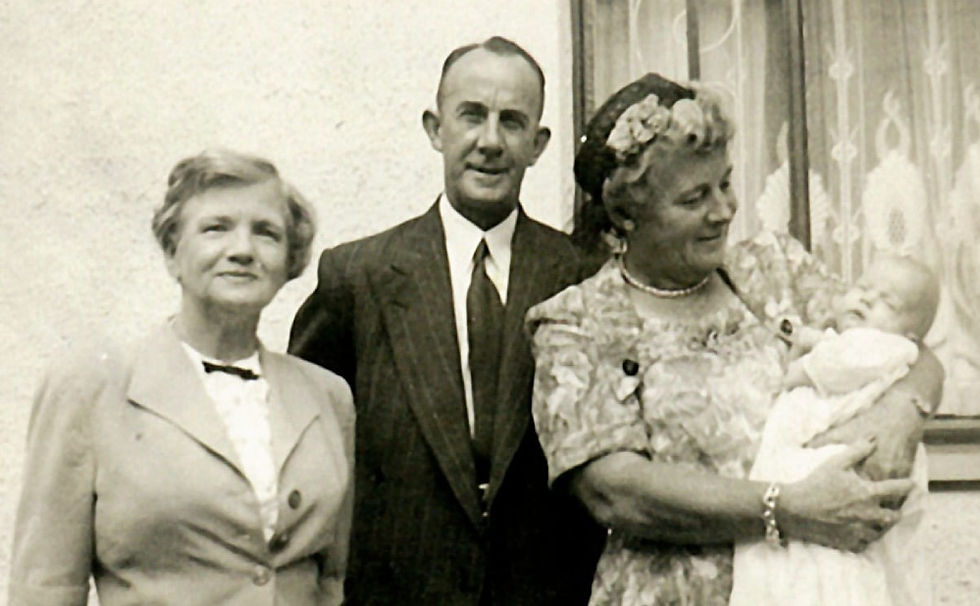The weird and wonderful world of stamps
- Leanne Johnson
- Mar 12, 2024
- 4 min read
Updated: Jan 25, 2025

It may not have been the ballet, or a book launch, but who knew that a talk on the wonderful world of stamps could get me excited enough to write a blog? Cas Groot - a seasoned Philatelist residing in Montagu, WC, who began his stamp collecting journey at the age of 9 - introduced us to his world of stamps and the weird and wonderful stories they have to tell.
It was enough for me to rush home and dig out my humble stamp collection albums (there are only two) as a novice 12-year old philatelist in the early 80s, and look at them with new eyes and perhaps even a sense of wonder. (In my opinion it is quite an impressive - and pretty - collection. But what do I know?).
Cas was quick to address the typical yawning responses to the hobby of philately by observing that you have to be “thick-skinned to be a stamp collector because of the abuse from friends and family who really don’t get it.” There were clearly none in our audience; they had all stayed at home on a Monday night.
Fun fact: Philately - the hobby of collecting stamps - originated in France in the 1850s.
Cas Groot’s stickability to the hobby is way more impressive than mine as he is still at it. His overarching perspective is that you start collecting the world and then you narrow that down to certain countries, motifs or themes. (Popular collectible themes include fauna, flora and aeroplanes).

His personal stamp collection and area of expertise encompasses stamps, with a cancellation mark on them, from Scandinavia, France and French colonies. (I mention this in case you have any of these lying around that you could pass on to him).
Fun fact: The Penny Black was the very first stamp issued for standardised postage in 1840, showcasing a portrait of Queen Victoria. (I am assuming that would now be worth a pretty penny!). The Spanish, who wanted to keep up with the British, soon issued their Penny Black stamp with their own Queen Isabella II on it.
My earlier reference to the 80’s is significant as that was pre the 4th industrial revolution, our 21-st century digital age, and a ‘connected’ world. The irony is that postage stamps were clearly the esteemed forerunners in connecting us globally, and a forerunner to Wikipedia in telling us a little bit about the history of the world.

Let your mind go back to letters to and from family, friends and penpals (I had a penpal in France and one in China), aerogrammes and postcards. They connected the world thanks to the humble little postage stamp.
Fun fact: Once upon a time in Switzerland, the post was delivered twice a day; morning and evening. So you could send a postcard to a friend letting them know you would be popping in for coffee the next morning. (The obvious precursor to an sms or Whatsapp message).
Cas was quick to emphasise the importance the role stamps has played in recording the history of a country as well as the commemoration of national and international events. It was fascinating to learn about subversive messaging and overprinting propaganda on stamps. (BTW - these are very rare).
And then there are the artists who are commissioned to design the intricate and beautiful images on stamps over the centuries. (Such a pity that that is a dying art form).
Fun fact: Iceland has stopped issuing stamps.
To be fair to my fellow South Africans, with the collapse of our postal system, when was the last time we saw a stamp or received a stamped letter with a cancellation on it? Are South African stamps even being issued and if so, what is the current price of stamps for a standardised letter?
The disappearance of stamps in South Africa is as much a commentary on our political history as those that were in circulation. (Who knows, perhaps money is still being ‘budgeted’ for new stamps to be issued. Just not sure they will ever see the light of day).
The photo below showcases a few of my ‘prestigious’ South African stamps.

It's interesting to look back - as an adult - on the South African stamps from my childhood collection and reflect on the changes in our local history and how stamps are visual illustrations and snippets of a time. (I had never really thought about them like that before).
And no matter the current political and educational revisionist approach to our complex journey as a country, these little artworks stand as truth bearers and storytellers of the past.
Fun fact: Due to the chemicals used in the glue, stamps can rust when exposed to air over a long time.
Cas is not only a knowledgeable and experienced philatelist; his background as a tour guide in Europe and Southern Africa, showcased his entrepreneurial vision. For him, the first place a tourist or tour guide should visit is the local post office. But because this is not usually on a tourist’s itinerary, he would visit the local post office, buy the stamps and then sell them to his tour groups as stamps are collectible memories of places, artists, stories, geography, politics, currency changes and historical events. (And they easily fit in your suitcase).
Fun fact: Pierre de Wet, who lives in Montagu, is an artist who designed the 1975 Taal Monument 5c stamp.
These are just some of the things I learnt from Cas Groot’s fun and enlightening talk on the wonderful world of stamps.
Maybe I’ll have a cup of coffee with him and show him my stamp collection. There might be one or two really valuable ones or perhaps a couple that might be a valuable addition to his personal collection. (He is quite pedantic about the cancellation marks though).
PS. This blog is dedicated to the memory of my husband’s paternal grandfather - Alfred James Johnson (1899-1980) - who faithfully served as a postman in East London, EC, (and even Madagascar, during WWII) for 40+ years. (Photo taken in 1954).

Written by Leanne Johnson









Comments